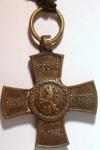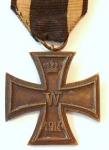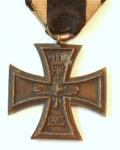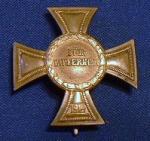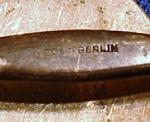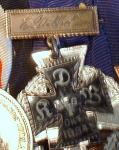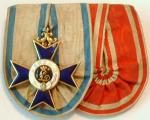
Beau Newman
Valued Member-
Posts
741 -
Joined
-
Last visited
-
Days Won
1
Content Type
Profiles
Forums
Blogs
Gallery
Events
Store
Everything posted by Beau Newman
-
EK 1914 1914 EKII in brass!
Beau Newman replied to Motorhead's topic in Germany: All Eras: The Iron Cross
I've had this for many years. One piece brass with very good details. Full size. http://gmic.co.uk/uploads/monthly_05_2009/post-6181-1243113179.jpghttp://gmic.co.uk/uploads/monthly_05_2009/post-6181-1243113206.jpg -
Thanks guys. Ulsterman - I don't recall George mentioning where this came from. I got the impression that he had owned it for a while at that point. You are right about being fortunate to have pieces from his collection. I've still got everything I ever bought from him and never saw a bad piece on his table at OMSA. I even got his set of Nimmerguts through FJP Auction so, he comes to mind whenever I look something up. Maybe, one day, I'll have 10% of his knowledge on the subject. Rick - I have the Peter O-H book and had reviewed the info. in there. It seems to give some good numbers on the Godet pieces (this cross appears to be silver). I am still curious if these numbers reflect the total number awarded or if significant quantities of the Meybauer pieces were also awarded. Just based on my experience, it must be pretty rare. I have only seen a handful of other examples.
-
When I bought this piece from George Seymour several years ago, I assumed that this was a private purchase piece, similar to the Godet EKIs with added hooks. However, most of the information I have since seen leads me to believe that this is a "standard issue" type. Is there any information on variants of this award, numbers awarded & etc? Thanks. http://gmic.co.uk/uploads/monthly_05_2009/post-6181-1242708632.jpghttp://gmic.co.uk/uploads/monthly_05_2009/post-6181-1242708659.jpg The "GODET" is a little faint but, it is there.
-
The award of the swords on ring for the Ernestine Orders and Medals has always been a bit of a mystery to me. I know that these were not created until the mid '30's. Nimmergut states that they were awarded to "friends of the movement and armed forces". This is still a little vague. Can anyone enlighten me on the background of these? For instance, did one aready have to hold the medal or order prior to receiving the swords on ring? The lone example from my collection is pictured. Thanks in advance.
-
This is a group that I have tried to attribute for several years. When I first got it, I was excited to find the small attached veteran's badge with the name "E. Dobbelin" engraved on the suspension bar. I figured that a little research would soon reveal more about Herr Dobbelin. Many years later, I still know nothing more than he was a career NCO who received a wartime commission, saw service at some point in German Southwest Africa, was likely a native of Reuss or saw service with a Reuss unit and was in the civil service up to at least 1936. It seems odd that there is no Hindenburg Cross given that this was put together after its' introduction but, I long ago stopped wondering about the loose enforcement of the regulations.
-
I agree with you guys that these are not the typical Wagner made 1870s era crosses as seen on the Bavarian group below. This double ring type is often seen with the 25 year oakleaves with the double ring attachment that allowed it to be mounted directly to the cross instaed of the ribbon. I think there is a good chance that this type probably dates from the 1895 period like the 25 year devices. The detail on the core is very good, thoughnot as crisp as a Wagner piece and the relief is quite high with the obverse crown protruding above the frame. An almost identical example is shown on Page 1047 of Vol. II of Nimmergut. I think these are old but likely private purchase "spangenstucke" crosses.
-
I just took delivery on this interesting pair of 1870 EK groups. They were being sold separately but appear to have been to the same recipient. The 7 bar combination is correct for the 3rd Cavalry Division which consisted of the 8th Kur. and the 5th, 7th and 14th Uhlan Regts. Since the 14th was a Hannoverian unit, we can rule it out because of the Koniggratz Cross. I haven't been able to find detailed order of battle for Koniggratz so, I don't know which of the other units were present there. Both Iron Crosses are later types with a double ring suspension and "white metal" frames as shown in item 2537 on Page 1047 of Nimmergut, Vol. II. The regulation mounted group has the odd non-standard 25 year oak leaf like that shown on Page 150 of "The Iron Time". The frackspange mounted group has a standard 25 year device but, the othe awards appear to be private purchase examples that have been plated to provide more flash.


